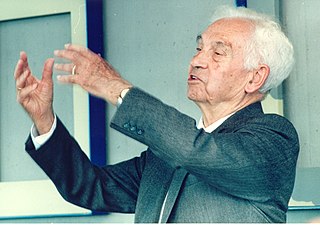
Ernst Walter Mayr was a German-American evolutionary biologist. He was also a renowned taxonomist, tropical explorer, ornithologist, philosopher of biology, and historian of science. His work contributed to the conceptual revolution that led to the modern evolutionary synthesis of Mendelian genetics, systematics, and Darwinian evolution, and to the development of the biological species concept.

Rheas, also known as ñandus or South American ostrich, are moderately sized South American ratites of the order Rheiformes. They are distantly related to the African ostriches and Australia's emu, with rheas placing just behind the emu in height and overall size.

Ratites are a polyphyletic group consisting of all birds within the infraclass Palaeognathae that lack keels and cannot fly. They are mostly large, long-necked, and long-legged, the exception being the kiwi, which is also the only nocturnal extant ratite.

Struthionidae is a family of flightless birds, containing the extant ostriches and their extinct relatives. The two extant species of ostrich are the common ostrich and Somali ostrich, both in the genus Struthio, which also contains several species known from Holocene fossils such as the Asian ostrich. The common ostrich is the more widespread of the two living species, and is the largest living bird species. The extinct genus Pachystruthio from the Late Pliocene-Early Pleistocene of Eurasia is one of the largest birds ever.
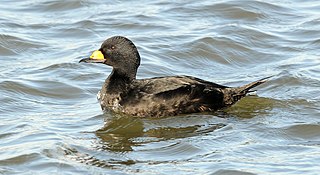
The black scoter or American scoter is a large sea duck, 43 to 49 cm in length. The genus name is derived from Ancient Greek melas "black" and netta "duck". The species name is from the Latin for "American".
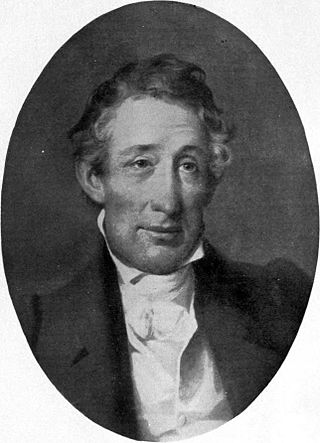
George Ord, Jr. was an American zoologist who specialized in North American ornithology and mammalogy. Based in part on specimens collected by Lewis and Clark in the North American interior, Ord's article "Zoology of North America" (1815), which was published in the second American edition of William Guthrie's Geographical, Historical, and Commercial Grammar, has been recognized as the "first systematic zoology of America by an American".

William Swainson FLS, FRS, was an English ornithologist, malacologist, conchologist, entomologist, and artist. A prolific collector of natural history specimens he produced an influential illustrated classification of birds based on the quinarian system that was then in fashion. He settled in New Zealand in later life.

Frederick DuCane GodmanDCL FRS FLS FGS FRGS FES FZS MRI FRHS was an English lepidopterist, entomologist and ornithologist. He was one of the twenty founding members of the British Ornithologists' Union. Along with Osbert Salvin, he is remembered for studying the fauna and flora of Central America.

Rollo Howard Beck was an American ornithologist, bird collector for museums, and explorer. Beck's petrel and three taxa of reptiles are named after him, including a subspecies of Galápagos tortoise, Chelonoidis nigra becki from Volcán Wolf. A paper by Fellers examines all the known taxa named for Beck. Beck was recognized for his extraordinary ability as a field worker by Robert Cushman Murphy as being "in a class by himself," and by University of California at Berkeley professor of zoology Frank Pitelka as "the field worker" of his generation.

Joseph Smit was a Dutch zoological illustrator.
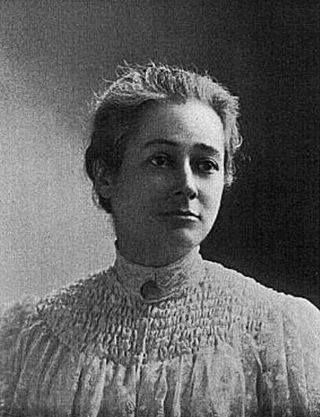
Florence Augusta Merriam Bailey was an American ornithologist, birdwatcher, and nature writer. Between 1890 and 1939, she published a series of field guides on North American bird life. These guides were often written with amateur birdwatchers in mind, leading to the popularity of the birding movement.

Darwin's rhea or the lesser rhea is a large flightless bird, the smaller of the two extant species of rheas. It is found in the Altiplano and Patagonia in South America.

The greater rhea is a species of flightless bird native to eastern South America. Other names for the greater rhea include the grey, common, or American rhea; ema (Portuguese); or ñandú. One of two species in the genus Rhea, in the family Rheidae, it inhabits a variety of open areas, such as grasslands, savanna or grassy wetlands. Weighing 20–27 kilograms (44–60 lb), the greater rhea is the largest native bird in the Americas. In the wild, the greater rhea has a life expectancy of 10.5 years. It is also notable for its reproductive habits, and for the fact that a population has established itself in Northern Germany in recent years. The species is listed as Near Threatened by the IUCN.

Palaeognathae is an infraclass of birds, called paleognaths or palaeognaths, within the class Aves of the clade Archosauria. It is one of the two extant infraclasses of birds, the other being Neognathae, both of which form Neornithes. Palaeognathae contains five extant orders consisting of four flightless lineages, termed ratites, and one flying lineage, the Neotropic tinamous. There are 47 species of tinamous, five of kiwis (Apteryx), three of cassowaries (Casuarius), one of emus (Dromaius), two of rheas (Rhea) and two of ostriches (Struthio). Recent research has indicated that paleognaths are monophyletic but the traditional taxonomic split between flightless and flighted forms is incorrect; tinamous are within the ratite radiation, meaning flightlessness arose independently multiple times via parallel evolution.
Eugen von Boeck was a German educator and scientist who lived in Chile, Peru and Bolivia sending and publishing the results of his research in Europe during the second half of the 19th century.
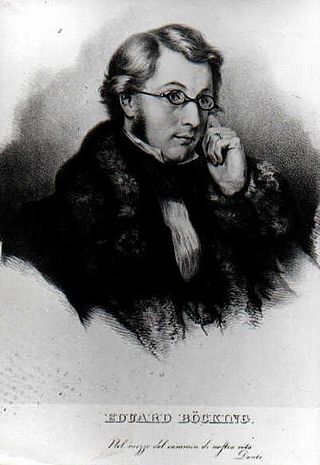
Eduard Böcking was a famous German legal scholar who taught at University Bonn for 35 years and who wrote many scholarly works considered to be treasure troves of rich knowledge and ideas that have stood the test of time. He is best known for his editions of, and commentaries on, the legal works of classical antiquity.
David William Steadman is a paleontologist and ornithologist, and Curator Emeritus of ornithology at the Florida Museum of Natural History at the University of Florida.
Bradley Curtis Livezey was an American ornithologist with scores of publications. His main research included the evolution of flightless birds, the systematics of birds, and the ecology and behaviour of steamer ducks.
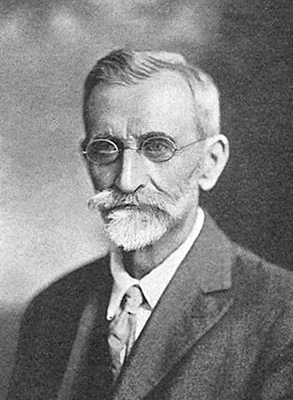
Frank Stephens (1849–1937) was an American naturalist and the first director of the San Diego Natural History Museum. He was considered the pioneer naturalist of the Southwest, studying the mammals and birds of California, Arizona, and Baja California. His personal specimen collection of 2,000 birds and mammals, donated in 1910, was the foundation of the San Diego Natural History Museum's Birds & Mammals Department, now a major resource on bird and mammal species of western North America, including Baja California.
Philip Strong Humphrey was an ornithologist, museum curator, and professor of zoology.
















